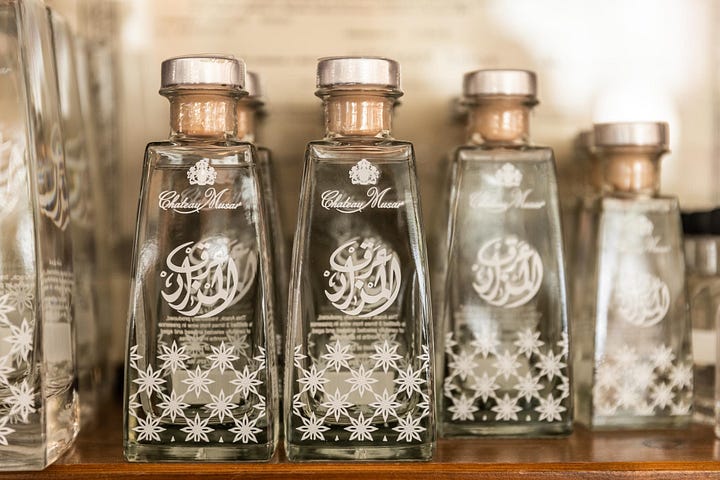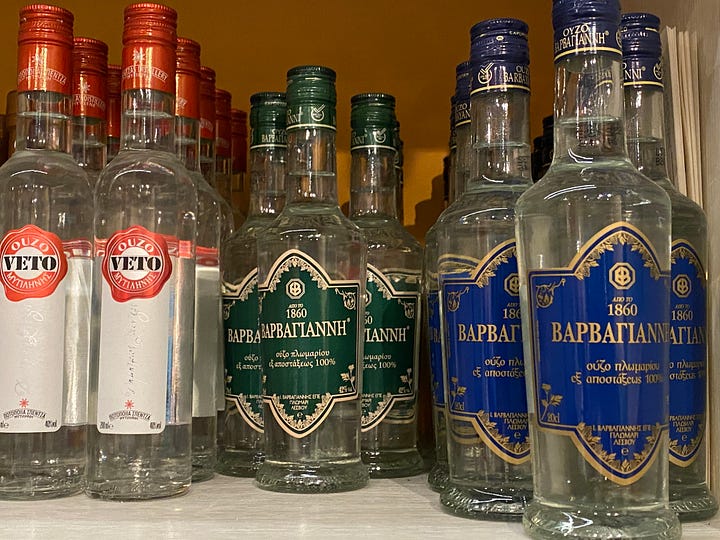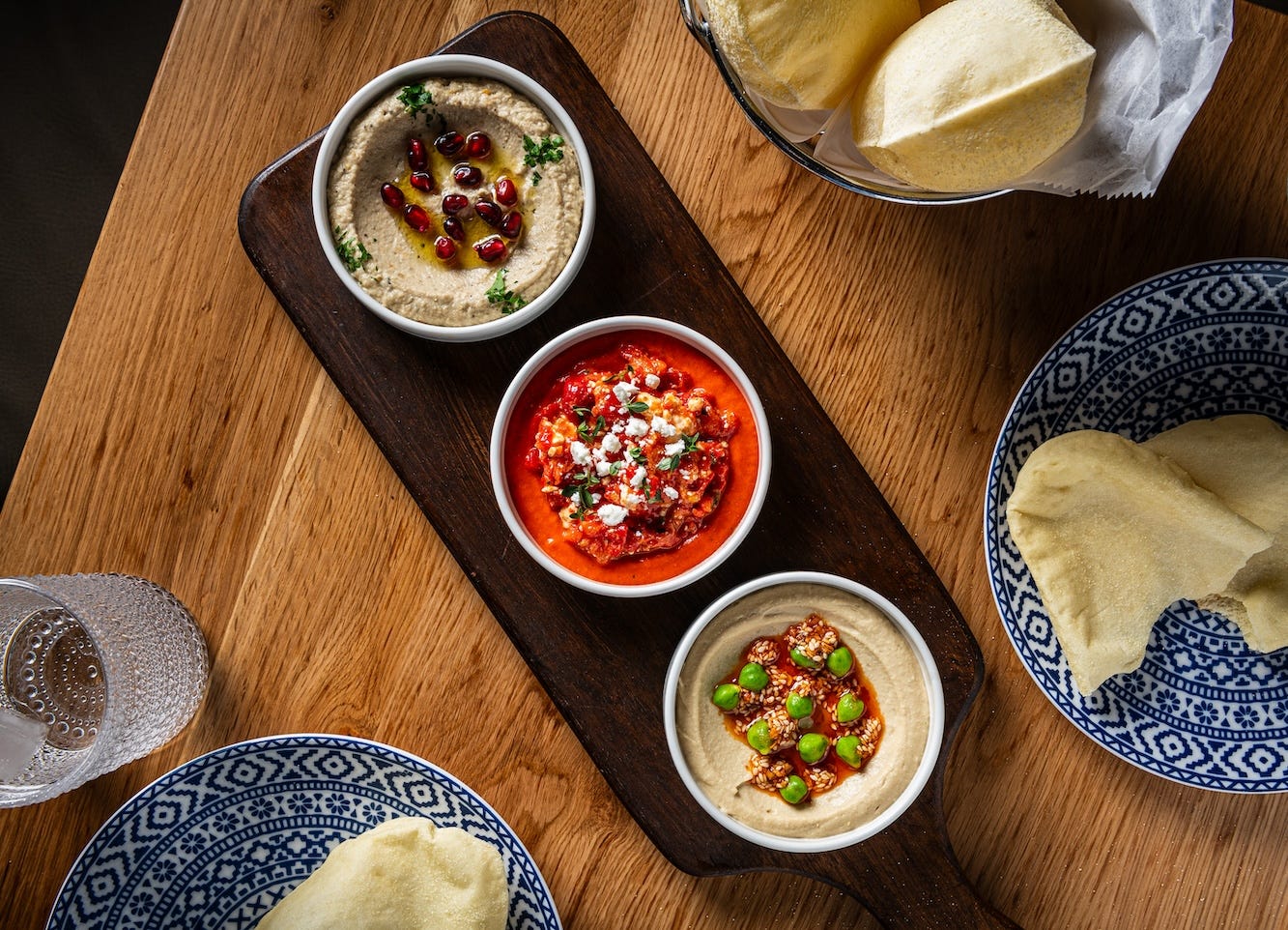Spirits of the Eastern Mediterranean
Ouzo, Rakı, and Arak are three beloved drinks from the region
Today, I want to give you a preview of the Zaytinya cookbook, which I’m so excited to say is coming out next month! I don’t think I’ve told you guys yet, but I’m actually going to be going on a little book tour around the release. I’m hosting an event called José Andrés & Friends: The Zaytinya Cookbook of Mezze Madness—maybe it’s a sort of old-time variety show?—with interviews with my friends, cooking, and live music. We’ll be in New York City on March 20 and DC on March 21…please come and we can spend a night together!
No matter what, maybe you live in California and can’t join us, or you’re busy those nights…at least you might be interested in owning the book.
Here’s an excerpt about three spirits that are very common throughout the Eastern Mediterranean: Ouzo in Greece, Rakı in Turkey, and Arak throughout the Middle East. They have similar backgrounds, but the culture around each, and especially the foods that are eaten with each one, are different. It’s both the similarities and the differences that I always find interesting—we are all human, after all, and we can connect with each other at a longer table…covered with plates and glasses of delicious food and drink, of course!


All of the recipes I mention below—shrimp saganaki, kolokythokeftedes (zucchini fritters), baba ghannouge, and hummus—are in the cookbook…so I hope you’ll order a copy and get excited to give them a try yourself!
So now, Spirits to Sip: Ouzo, Arak, and Rakı
The three cuisines we focus on in the cookbook—Greek, Lebanese, and Turkish—overlap again and again. History and culture are more relevant than political borders in understanding the foods and drinks of the Eastern Mediterranean. When we talk about the three liqueurs known as ouzo in Greece, arak in Lebanon (and throughout the Middle East), and rakı in Turkey, this is very clear—they all have their roots in the twelve hundred-year old distillation process, first developed by the Arab chemist Jabir ibn Hayyan to make mascara (the word “alcohol” comes from the Arabic word for eyeliner, al kohl!)
All three drinks have a very similar process for production: start by fermenting grapes, then distill it with anise seed—the key ingredient, and most distinguishing flavor, of this family of drinks. It’s what makes them so popular and loved in the region, and maybe I should say a bit of a challenge to some people around the world. Other herbs and spices might make their way into the distillations as well—sweet spices like cinnamon, cloves, and cardamom, as well as mint and thyme. There are some differences in the methods of production and ingredients, of course, and individual makers will take their own liberties, but these three drinks have always been a close family.
The process of drinking each one is part of the fun. They’re usually served with a small glass of water or ice, which you can mix according to how you like it. When you pour water into each of them, you get a very cool chemical reaction: the essential oils from the anise quickly emulsify in the water, making the drink go from clear to milky and opaque. In Turkey, it’s known as aslan sütü—lion’s milk.
All of them are usually drunk with food. In fact, the Greeks have a word for drinking without eating— xerosfýri, literally “dry hammer”—which is not a good idea! I don’t know all the science, but I’ve heard that since ouzo’s sugar content is generally higher than other liquors, and sugar delays the body absorbing alcohol, you will drink more of it before you realize you are drinking too much.
Food helps this problem, of course! In Greece, you will see mezze—seafood like shrimp saganaki or fried squid, or salty bites like kolokithokeftedes. In Turkey, rakı must be accompanied by cheeses and melon, along with hot and cold mezze. Arak is great with baba ghannouge, hummus, or other dishes. If you’re wondering about a pairing, since these drinks are so strong, they match well with other powerful flavors: raw garlic, fresh lemon, fatty meats. You probably can’t go wrong.
In Turkey, a table full of mezze and glasses of rakı is sometimes known as a çilingir sofrası, or “locksmith’s table,” because as you drink more of it, conversations get deeper and truths will unlock. I love this idea, that we can all sit around a table together, eating and drinking and discovering things about ourselves and each other, late into the night.
Friends! If you want more food stories, history, photos, and amazing recipes, check out the Zaytinya cookbook, which will be out in a few short weeks…






I can’t wait for this book!
Arak was the only way I survived hiking through Israel... Wonderful post, Chef!